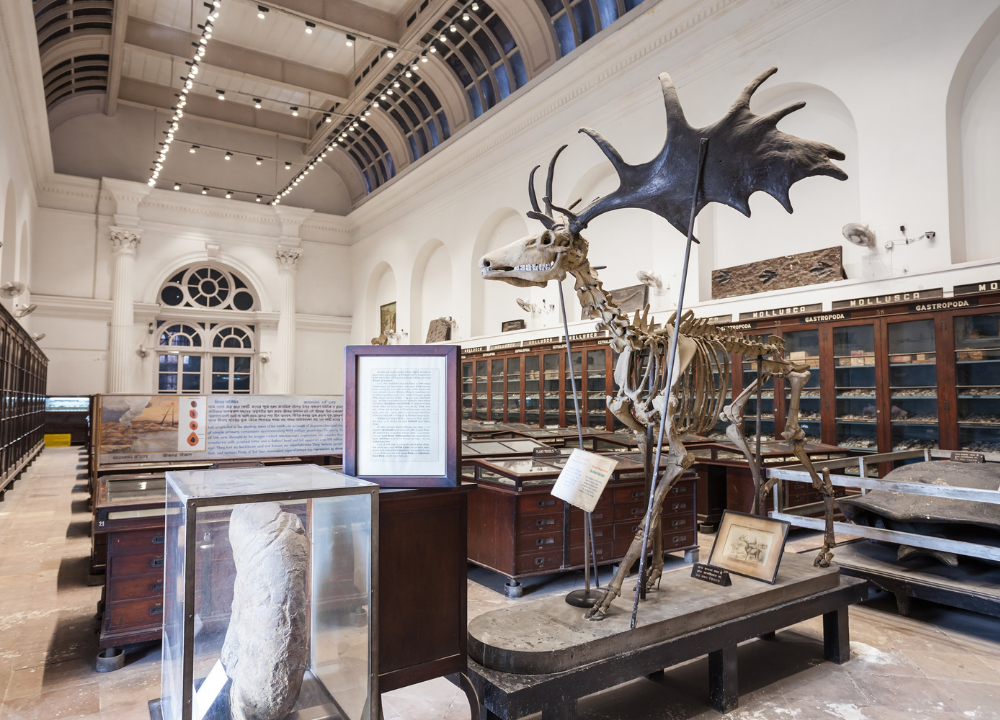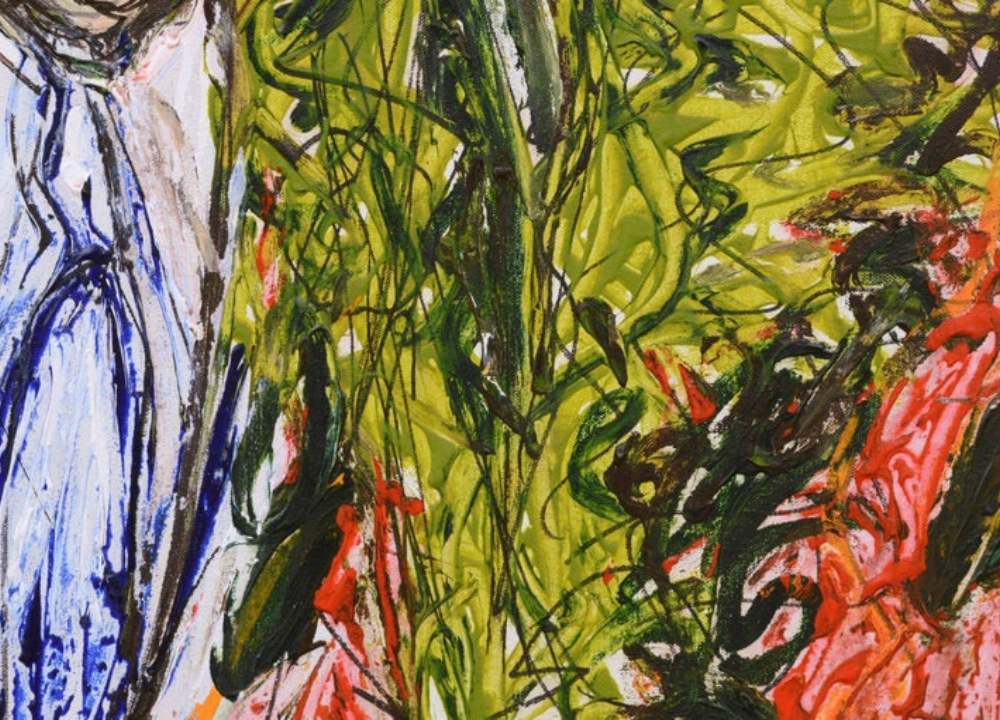Indian Museum: North America showcases the rich cultural heritage of indigenous peoples through artifacts, artworks, and interactive exhibits. It highlights the history, traditions, and contributions of Native American tribes from various regions of North America.
Visitors can explore the diverse art forms, traditional craftsmanship, and ancient practices that have shaped the indigenous communities throughout history. The museum offers a unique opportunity to learn about the indigenous cultures and foster an appreciation for their enduring legacy in North America.
With its engaging displays and educational programs, Indian Museum: North America provides an enriching experience for visitors of all ages, promoting a deeper understanding of the indigenous peoples and their significant role in shaping the cultural landscape of the continent.
History Of Indian Museums In North America
Indian museums in North America have a rich and fascinating history that dates back several decades. These museums play a crucial role in promoting and preserving the cultural heritage of India. Let’s delve into the early establishments and the development of Indian museums over time.
Early Establishments
In the early years, the establishment of Indian museums in North America was driven by a desire to showcase the diverse traditions, art, and history of India. These museums aimed to create a bridge between the Indian diaspora and the local community, fostering cross-cultural understanding.
One of the earliest Indian museums in North America was the Smithsonian Institution’s National Museum of the American Indian. This museum, located in Washington D.C., was opened in 2004 and became a significant cultural landmark.
Another notable early establishment is the Peabody Essex Museum in Salem, Massachusetts. It holds an extensive collection of Indian artifacts and art forms, providing visitors with a comprehensive view of India’s rich cultural heritage.
Development Over Time
Over the years, Indian museums in North America have expanded in both size and scope, offering a broader range of exhibits and educational programs. The development of these museums has been a continuous effort to enhance visitor experiences and promote cultural exchange.
Today, Indian museums in North America boast state-of-the-art facilities and interactive exhibits that engage visitors of all ages. These museums have evolved, incorporating modern technologies and innovative display techniques to portray India’s history, art, and cultural traditions in a captivating manner.
Old artifacts and artworks are meticulously preserved in temperature-controlled environments, allowing visitors to witness the brilliance of ancient India up close. The exhibits often showcase themes such as Indian textiles, religious artifacts, traditional crafts, and historical artifacts spanning various time periods.
Moreover, Indian museums frequently organize cultural events, workshops, and lectures to deepen visitors’ understanding of Indian culture. These initiatives serve as platforms for promoting dialogue and fostering appreciation for India’s vibrant heritage.
| Museum Name | Location |
|---|---|
| Smithsonian Institution’s National Museum of the American Indian | Washington D.C. |
| Peabody Essex Museum | Salem, Massachusetts |
In conclusion, the history of Indian museums in North America is a testament to the enduring efforts of communities to preserve and showcase India’s cultural heritage. These museums have grown and thrived, becoming important cultural institutions that strive to promote understanding and appreciation of India’s rich and diverse traditions.

Significance Of Indian Museums In North America
Explore the rich history and cultural heritage at Indian museums in North America. Discover diverse exhibits showcasing the vibrant traditions and contributions of Indian communities in an immersive and educational experience. Gain insight into the diaspora’s impact through fascinating artifacts and interactive displays.
Preservation Of Cultural Heritage
Indian Museums in North America play a crucial role in preserving and protecting cultural heritage.
Promotion Of Cross-cultural Understanding
These museums foster cross-cultural understanding through interactive exhibits and educational programs In North America, Indian Museums serve as gateways into the rich history and diversity of Native American tribes.
Preservation Of Cultural Heritage
Through artifacts and displays, these museums safeguard the unique traditions of indigenous peoples.
Promotion Of Cross-cultural Understanding
By showcasing artwork and artifacts, Indian Museums in North America bridge cultural divides. In conclusion, Indian Museums in North America carry the important task of preserving history and fostering cross-cultural connections.
Collections And Exhibits
`The Indian Museum: North America boasts a diverse array of captivating Collections and Exhibits that offer a glimpse into the rich cultural heritage of indigenous communities.
Artifacts And Relics
`The museum proudly displays a vast collection of ancient artifacts and relics that tell fascinating stories of bygone eras.
Archaeological Discoveries
`Discover archaeological findings that shed light on ancient civilizations and their ways of life, preserved for generations to admire.
Folklore And Indigenous Knowledge
`Immerse yourself in the wisdom and traditions of diverse indigenous cultures through a collection that celebrates their folklore and knowledge.
Role Of Indian Museums In Education
Discover the significant role Indian Museums in North America play in enriching education through showcasing diverse cultural heritage. Immersive exhibits offer a unique learning experience, fostering cross-cultural understanding and appreciation within the community.
Indian museums play a vital role in education, offering a range of learning opportunities for students of all ages. Through their immersive exhibits and engaging programs, these museums help cultivate a deeper understanding and appreciation for Indian culture, history, and art. Let’s explore two key aspects of the role of Indian museums in education: curriculum integration and museum outreach programs.
Curriculum Integration
Indian museums collaborate with educational institutions to integrate their exhibits into school curriculums. By aligning the museum experience with classroom learning, students experience a more holistic and comprehensive understanding of the subject matter. The incorporation of museum visits into the curriculum reinforces academic concepts and fosters a multi-dimensional approach to learning.
Bold and visually-rich displays captivate students’ attention, intriguing them to dive deeper into various topics. Museums showcase artifacts, artwork, and historical objects that bring textbooks to life, allowing students to connect with the past on a personal level. For example:
| Topic | Museum Exhibit | Key Takeaways |
| Indian Independence Movement | Display of letters, photographs, and speeches by prominent leaders | Understanding the sacrifices and ideologies that led to India’s freedom struggle |
| Ancient Indian Civilization | Replica of a Harappan city with interactive elements | Exploring the daily life and achievements of the people from the Indus Valley Civilization |
By incorporating museum visits into the curriculum, students are exposed to authentic primary sources, fostering critical thinking and research skills. They learn to analyze and interpret historical evidence directly and gain a deeper appreciation for the diversity and complexity of Indian heritage.
Museum Outreach Programs
Indian museums have also developed comprehensive outreach programs aimed at making educational resources accessible to a wider audience. These programs include:
- Virtual Field Trips: Museums offer virtual tours, allowing students from remote locations to engage with the exhibits and participate in interactive sessions.
- Mobile Exhibits: Museums bring their displays to schools, ensuring that students who cannot visit the physical location still have the opportunity to experience the wonders of Indian culture and history.
- Workshops and Lectures: Experts from Indian museums lead workshops and lectures in schools, providing students with hands-on experiences and in-depth knowledge on various topics.
- Teacher Training: Indian museums assist educators in integrating museum resources and methodologies into their teaching practices, empowering them to enrich their classroom experience.
Through these diverse outreach initiatives, Indian museums break down barriers to education and ensure that students from all backgrounds have the chance to engage with and learn from their exhibits. These programs not only inspire curiosity but also serve as catalysts for lifelong learning and cultural awareness.
Challenges Faced By Indian Museums In North America
The Indian Museum in North America faces numerous challenges that hinder their operations and ability to preserve and showcase the rich cultural heritage of India. Addressing these challenges is crucial to ensuring the continued relevance and sustainability of these institutions.
Funding And Resources
Securing adequate funding and resources poses a significant challenge for Indian museums in North America. Limited financial support often restricts their capacity to acquire new artifacts, maintain existing collections, and implement educational programs. Furthermore, these institutions often struggle to attract sponsorships and donations, which are essential for their growth and development.
Repatriation Issues
Indian museums in North America encounter persistent challenges related to repatriation. The process of reclaiming cultural artifacts and ceremonial objects can be complex due to legal and diplomatic hurdles, making it difficult to reunite these items with their rightful communities in India. Additionally, navigating the regulatory frameworks and negotiation processes with various institutions and governments further complicates the repatriation efforts.
Future Of Indian Museums In North America
The future of Indian museums in North America looks promising, with a growing focus on technology integration and collaboration with indigenous communities. As these institutions continue to evolve, they are embracing innovative ways to engage visitors and honor the rich heritage of Native American cultures. Let’s delve into some key aspects that will shape the future of Indian museums in North America.
Technology Integration
Indian museums in North America are leveraging advanced technologies to enhance the visitor experience. Interactive displays, virtual reality experiences, and augmented reality applications are being integrated to offer immersive learning opportunities. These digital innovations not only captivate the audience, but also provide a deeper understanding of the historical and cultural significance of indigenous artifacts and traditions. Moreover, technology allows museums to reach wider audiences through online exhibitions, virtual tours, and educational resources.
Collaboration With Indigenous Communities
The collaboration between Indian museums and indigenous communities is pivotal to preserving and presenting authentic narratives. By working closely with tribal leaders and community members, museums can ensure that exhibits and programs are culturally respectful and accurately represent Native American heritage. This collaborative approach fosters a sense of ownership and inclusivity, honoring the voices and perspectives of indigenous peoples.
Frequently Asked Questions For Indian Museum: North America
How Long Does It Take To See The American Indian Museum?
It takes around 2-3 hours to see the American Indian Museum.
Why Is It The Museum Of The American Indian And Not The Native American?
The Museum of the American Indian uses this name to honor and respect the diverse Indigenous cultures of North and South America.
How Much Do Native American Get Paid A Month?
Native American payments vary, ranging from $300 to $3000 per month. These come from sources such as tribal business profits, government assistance, and individual land leases.
Why Is Indian Museum Famous?
The Indian Museum is famous for its rich collection of archaeological artifacts and art pieces, showcasing India’s cultural heritage.
Conclusion
In a nutshell, the Indian Museum in North America is a treasure trove of rich cultural heritage and historical artifacts. Its immersive exhibits and engaging storytelling create an unmatched experience for visitors of all ages. From ancient civilizations to contemporary art, this museum offers a glimpse into the captivating tapestry of Indian history and traditions.
Discover the wonders and diversity of India without leaving North America at this extraordinary institution. Visit the Indian Museum and embark on a fascinating journey that will leave you awe-inspired and enlightened.




